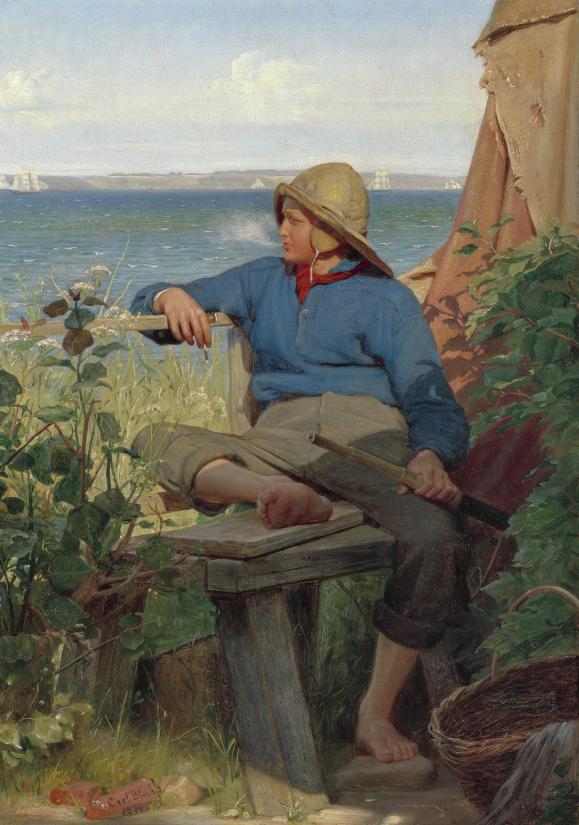There is a deep sense of calm in this little scene. The young sailor is relaxed, leaning against a fence and looking out over the bright blue sea with a thin cigarillo in his hand. He seems completely at ease as he sits there, his arm resting limply on the fence, as he blows out a puff of smoke. His blue shirt corresponds with the sea, the red bandana around his neck intensifying the blue. He sits surrounded by greenery, half in shade, with his trouser legs rolled up and the sole of his foot exposed. The scene has a very authentic feel, and as viewers, we might almost feel that we are intruding, disturbing his break.
Bloch’s connection to The Hirschsprung Collection
Painter Carl Bloch’s work played an important role in the founding of The Hirschsprung Collection. His painting Fishermen's families awaiting their return in an approaching storm. From the west coast of Jutland from 1858 was the first large piece that the museum founders, Henrich and Pauline Hirschsprung, acquired for their collection, in 1869. Over the years, it would be joined by additional paintings by Bloch.
Mixed reviews in posterity
The reception of Bloch’s work has varied considerably. Celebrated in his own time, it met with harsh criticism after his death. Bloch was one of Denmark’s most acclaimed artists in 1860–80. Art historian Julius Lange (1838–1896) described him as a true master, while the later art historian Emil Hannover (1864–1923) criticized him for not being modern. Hannover’s criticism of Bloch impacted the artist’s posthumous reputation. Hannover was influential in shaping the view of Danish art in his time, in part by virtue of his role as director of The Hirschsprung Collection. As a result, Bloch has long been a somewhat disregarded figure in Danish art history. However, with a large exhibition of Bloch’s work in 2012–13 and an upcoming exhibition at SMK – National Gallery of Denmark in spring 2023, this is now beginning to change.
About Carl Bloch (1834–90)
Carl Heinrich Bloch was born in Copenhagen in 1834. His early work dealt mostly with scenes from everyday country life, while his later paintings turned more to religious topics. He was accepted into the Royal Danish Academy of Fine Arts in 1849, where he studied under the acclaimed Golden Age painter Wilhelm Marstrand. For a number of years he lived in Italy, which influenced his historical topics. He is also known for his detailed etchings, genre paintings, landscapes and portraits and his ability to capture scenes with a great sense of authenticity.



